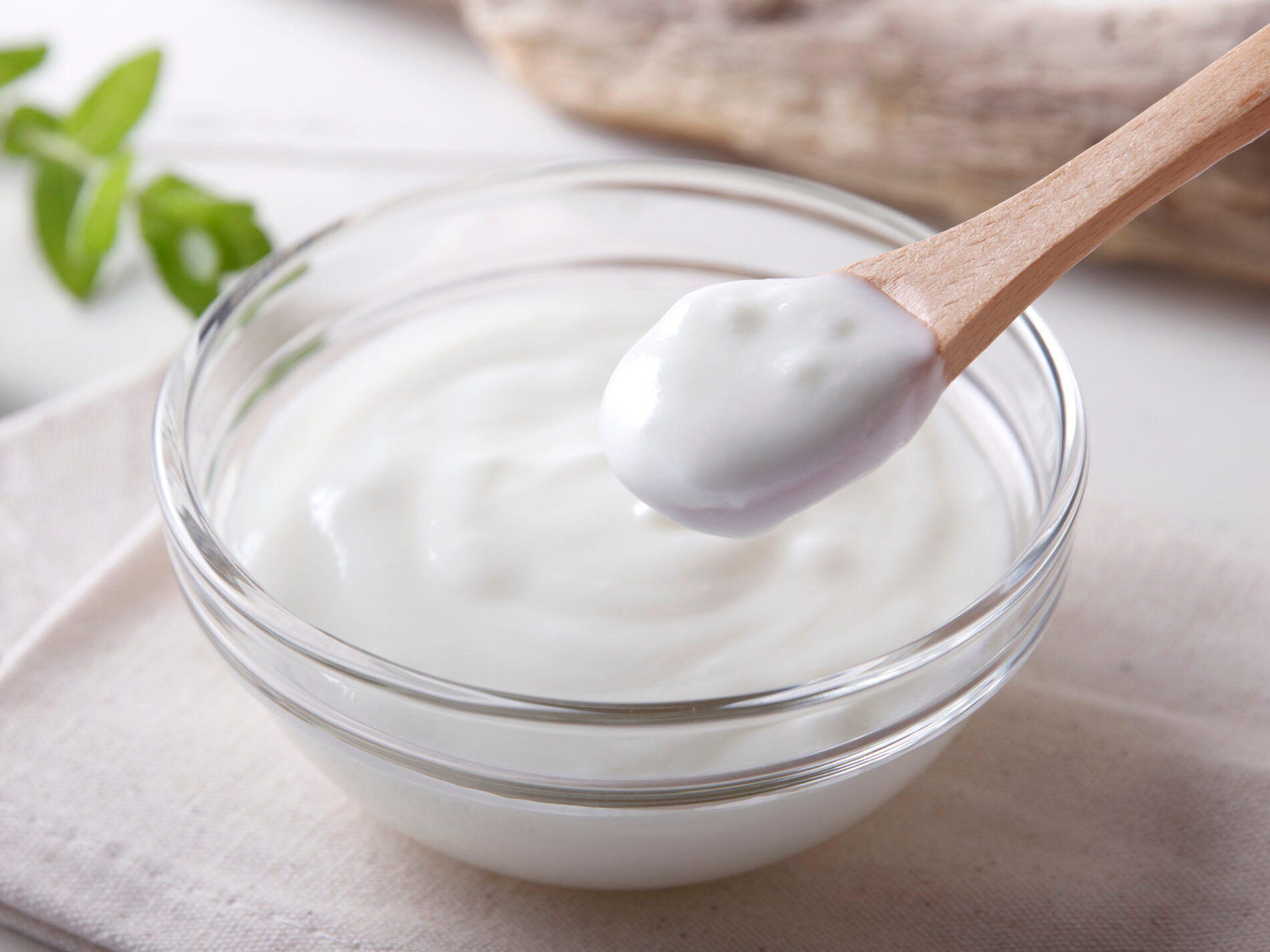No one really knows when the first yoghurt was made. Generally, scientists believe it happened sometime between 10,000 and 5,000 BC. At that time, milk-producing animals were getting domesticated.
Possibly, the yoghurt bacteria, which was later discovered on surfaces of plants, was accidentally transferred to milk.
Our ancestors didn’t have sophisticated methods of storing milk. Therefore, it was only natural that humans were bound to discover yoghurt in warmer climates. And they fell in love with it forever.
This love affair with yoghurt is simple to explain. It is a staple food in many diets and beneficial to health. And yoghurt tastes excellent on its own or as an ingredient for various dishes.
Infinite styles
These days one can find a great variety of yoghurts. The dairy market constantly expands, offering various flavours and consistencies of yoghurts.
And there are dairy-free yoghurts and other fermented milk products like kefir, skyr and probiotic drinks.
Let’s also not forget different yoghurt-based desserts, sauces and frozen yoghurts. We are getting spoiled by the vast amount of choice.
However, it’s relatively easy to make yoghurt at home.
The fundamental ingredients for making your yoghurt
You will get different results depending on your choice of milk and yoghurt starter. Full-fat milk will produce creamier yoghurts than skimmed milk, for instance.
When it comes to yoghurt starters, you have two options. Either use your favourite store-bought yoghurt for the starter. Or get a dry yoghurt kit with live bacteria.
The store-bought option has to be free of preservatives, added sugar and flavourings. Plus, it has to contain live culture. And if you want to add flavour to your yoghurt, it must be done after it is made.
Like the result? Keep 3-4 tablespoons of it for the next batch!
Different methods for making your yoghurt
Using culture from a yoghurt starter kit allows one to make yoghurt over and over again. This is in contrast with the live bacteria from store-bought yoghurt. It tends to die after 4-5 cycles, so you will need to buy more fresh yoghurt to start over.
You might want to invest in a yoghurt incubator if you consume a lot of yoghurt. It keeps the temperature necessary for fermentation for as long as you like.
Certainly, our ancestors didn’t have incubators. Therefore, you, too, can make yoghurt without purchasing any additional equipment.
Now let’s make our homemade yoghurt
To make 750 g / 3 cups of yoghurt:
- Use 1 litre / 4 cups of milk.
- Pour the milk into a big pan.
- Place it on low-medium heat and bring the milk to 80° C / 180° F. Once the temperature is achieved, let the milk cool down to 45° C / 115° F.
- Take a cup of warm milk from the pan and add your choice of starter to it. Use 3-4 tbsp of yoghurt at room temperature or the yoghurt kit.
- Gently stir the starter to dissolve it in the milk.
- Then pour the cup with the starter back into the pan with the rest of the milk. Stir once more to allow the starter to spread evenly. Then, pour it into a sterilised container.
- Now, the trickiest bit comes if you don’t have an incubator. Your challenge will be to keep your milk at a steady 38° C / 100° F in the container for 7 hours. Some suggest keeping it on top of a radiator or a big thermos. Either way, once your milk is fermented, transfer it to a fridge and chill for a couple of hours.
Psst: use a fine mesh strainer to make Greek-style yoghurt.











What do you think?